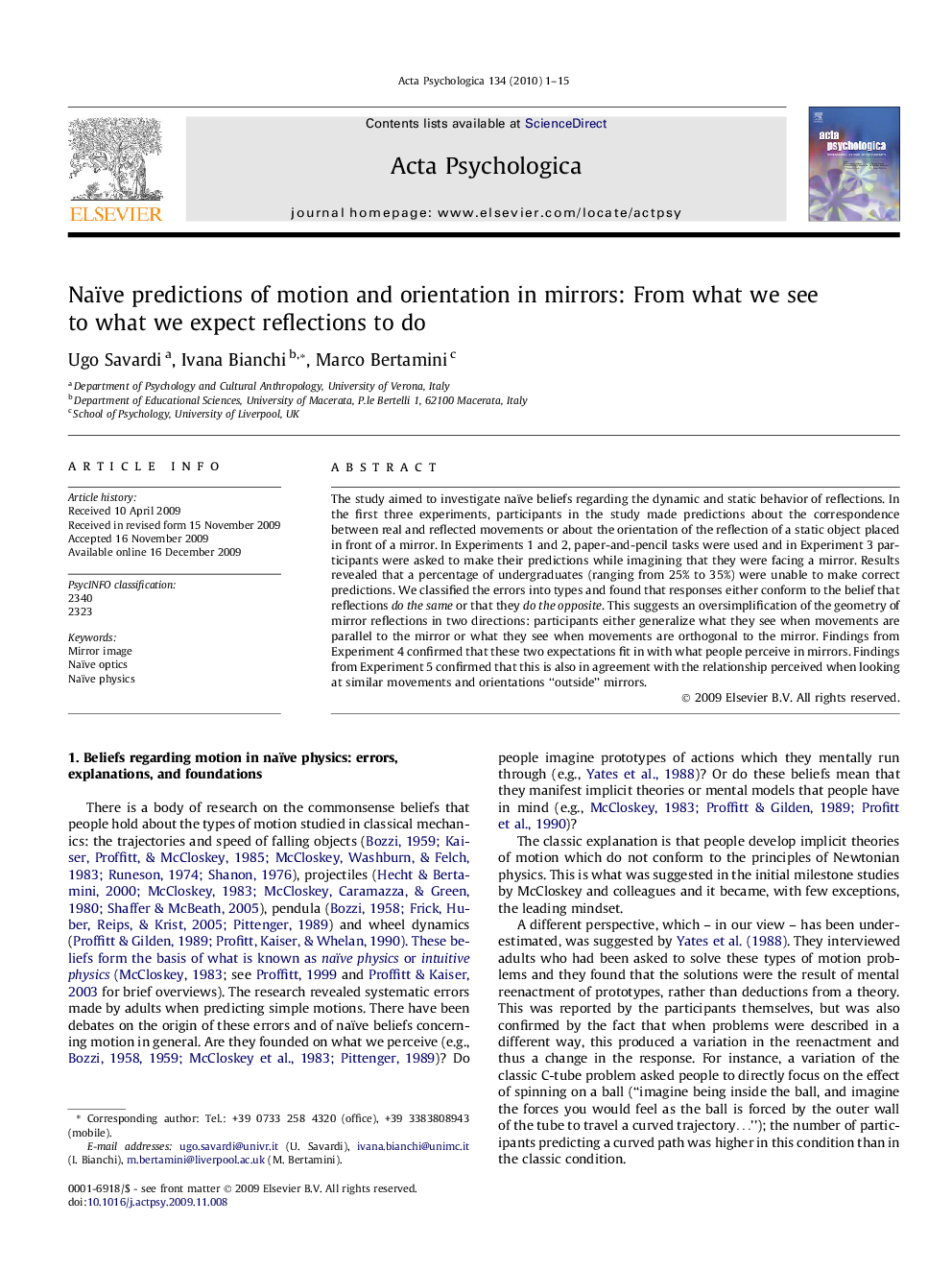| Article ID | Journal | Published Year | Pages | File Type |
|---|---|---|---|---|
| 920318 | Acta Psychologica | 2010 | 15 Pages |
The study aimed to investigate naïve beliefs regarding the dynamic and static behavior of reflections. In the first three experiments, participants in the study made predictions about the correspondence between real and reflected movements or about the orientation of the reflection of a static object placed in front of a mirror. In Experiments 1 and 2, paper-and-pencil tasks were used and in Experiment 3 participants were asked to make their predictions while imagining that they were facing a mirror. Results revealed that a percentage of undergraduates (ranging from 25% to 35%) were unable to make correct predictions. We classified the errors into types and found that responses either conform to the belief that reflections do the same or that they do the opposite. This suggests an oversimplification of the geometry of mirror reflections in two directions: participants either generalize what they see when movements are parallel to the mirror or what they see when movements are orthogonal to the mirror. Findings from Experiment 4 confirmed that these two expectations fit in with what people perceive in mirrors. Findings from Experiment 5 confirmed that this is also in agreement with the relationship perceived when looking at similar movements and orientations “outside” mirrors.
